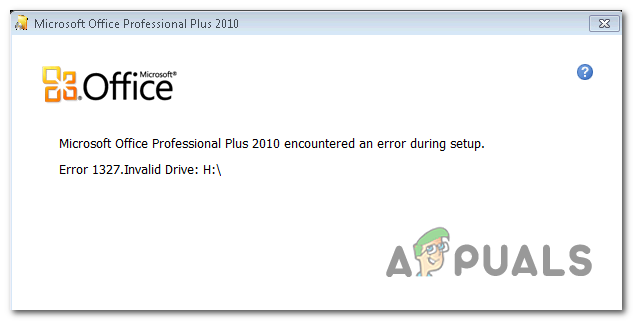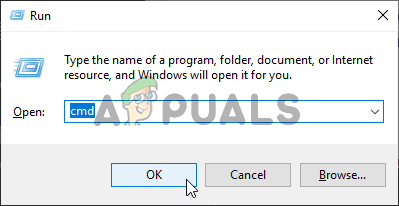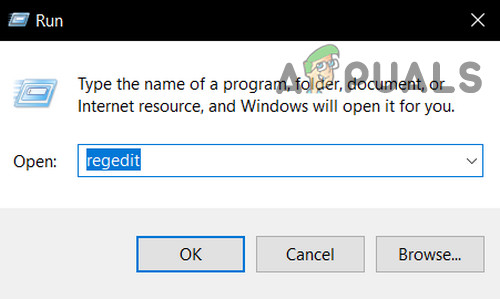How to Fix Invalid Drive Error 1327
Error 1327 ‘Invalid Drive’ is an installation error that occurs when the drive being used for the installation of the program is not valid. This issue is mainly seen with Microsoft Office installations but can also occur for many other applications.

In the vast majority of cases, this particular error will occur due to the fact that the installer is trying to complete the operation on a network location that is not mapped. In this case, you can fix the issue swiftly by mapping the network location that’s not configured.
We have focused on MS Office in this article; but the fixes are not limited to Office only. Depending on your skill-level, you should be able to apply the same approach to just about any application returning this error.
Office installations are prone to force the installation on set drives that might not exist. In this case, you can use a SUBST command to redirect to a correct drive or you can modify the LocalCacheDrive location manually.
Method 1: Mapping the unmapped network path
As it turns out, one of the most common reasons why ‘Error 1327. Invalid Drive’ is a situation in which the drive that’s signalled out in the error message is not actually mapped. It’s very likely that you don’t have permission to install the application on the network drive.
Several affected users that were encountering this problem have confirmed that the issue was resolved after they realized they were running the installer as an administrator even though the drive wasn’t mapped.
In case the same scenario is also applicable in your case, here are the step-by-step instructions on fixing it:
- Press Windows key + R to open up a Run dialog box. Next, type ‘cmd’ and press Ctrl + Shift + Enter to open up an elevated CMD prompt. When you are prompted by the UAC (User Account Control) window, click on Yes to grant admin access.

Running Command Prompt - Inside the elevated CMD prompt, type the following command and press Enter to map the drive that is triggering the error:
net use DRIVE: PATH
Note: Keep in mind that both DRIVE and PATH are placeholders that need to be replaced with the values that are applicable in your particular scenario. For example, let’s say I want to create the drive X from a network shared path eBooks – the correct command would be “net use X: \\eBooks“
- After the command has been successfully processed, close the elevated Command Prompt and restart your computer.
- Once your computer boots back up, repeat the installation and see if the issue is now resolved.
In case you’re still encountering the Error 1327. Invalid Drive, move down to the next potential fix below.
Method 2: Redirect the operation to your OS drive
If you’re encountering this issue with Office versions that are particularly old, chances are the installer is forcing the copying of file on a non-existent drive. This is typically reported to occur on with Office 2010 (Academic versions).
For some weird reasons, the installer is might force the installation on the ‘F:\’ drive, even if it doesn’t actually exist. This problem was eventually addressed by Microsoft, but if you’re trying to install this specific Office version from a traditional installation media like a CD, you’ll still encounter the issue.
Several affected users that were also struggling with this issue have confirmed that the problem was entirely fixed after they used the SUBST command to substitute the path of the problematic drive.
Here’s a quick guide on how to do this from an elevated CMD prompt:
- Press Windows key + R to open up a Run dialog box. Next, type ‘cmd’ and press Ctrl + Shift + Enter to open up an elevated CMD prompt. When you see the UAC (User Account Control), click Yes to grant administrative privileges.

Running the Command Prompt - Inside the elevated CMD prompt, type the following command, replace the placeholders and press Enter:
subst X: Y:\
Note: X is the placeholder for the non-existent drive and Y is the placeholder for your OS drive. So if you’re encountering the Error 1327. Invalid Drive F:\ and your Windows is installed on the C:\ drive, the correct command would be ‘subst F: C:\‘
- Once the command has been successfully processed, close the elevated CMD prompt and restart your computer.
- After your computer boots back up, repeat the step that was previously causing the problem and see if the problem is now resolved.
In case the same Error 1327. Invalid Drive’ is still occurring, move down to the next potential fix below.
Method 3: Fixing the Drive Letter via Registry Editor
If you’re encountering the problem with an older Microsoft Office installation or when trying to update your current Office installation to a newer version, the issue can also be caused due to a registry entry called LocalCacheDrive entry that is invalid.
Several affected users that were also encountering this issue have confirmed that they were able to fix the issue by using Registry Editor to changing the entry associated with LocalCacheDrive to a valid letter.
Here’s a quick guide on how to do this:
Note: The instructions below should work regardless of the Windows version that you’re encountering the issue on.
- Press Windows key + R to open up a Run dialog box. Next, type ‘regedit’ and press Enter to open up the Registry Editor. When you’re prompted by the User Account Control (UAC), click Yes to grant administrative privileges.

Open Regedit - Once you’re inside the Registry Editor, use the left-hand section to navigate to the following location:
HKEY_LOCAL_MACHINE\SOFTWARE\Microsoft\Office\
- Next, access to the subfolder associated with your office installation (E.G. 15.0, 16.0, 11.0, etc.), then select the Delivery key.
- After you arrive at the correct location, move over to the right-hand section and double-click on LocalCacheDrive.
- Inside the Edit String box associated with LocalCacheDrive, set the Value Data to your OS drive (most commonly C) and press Ok to save the changes.

Changing to the correct lLcalCacheDrive value




